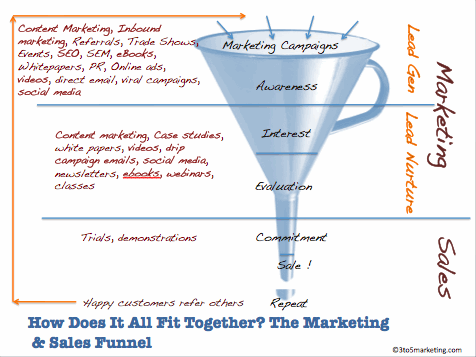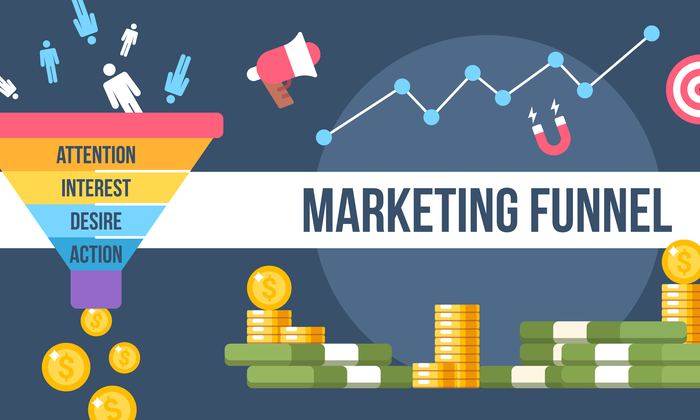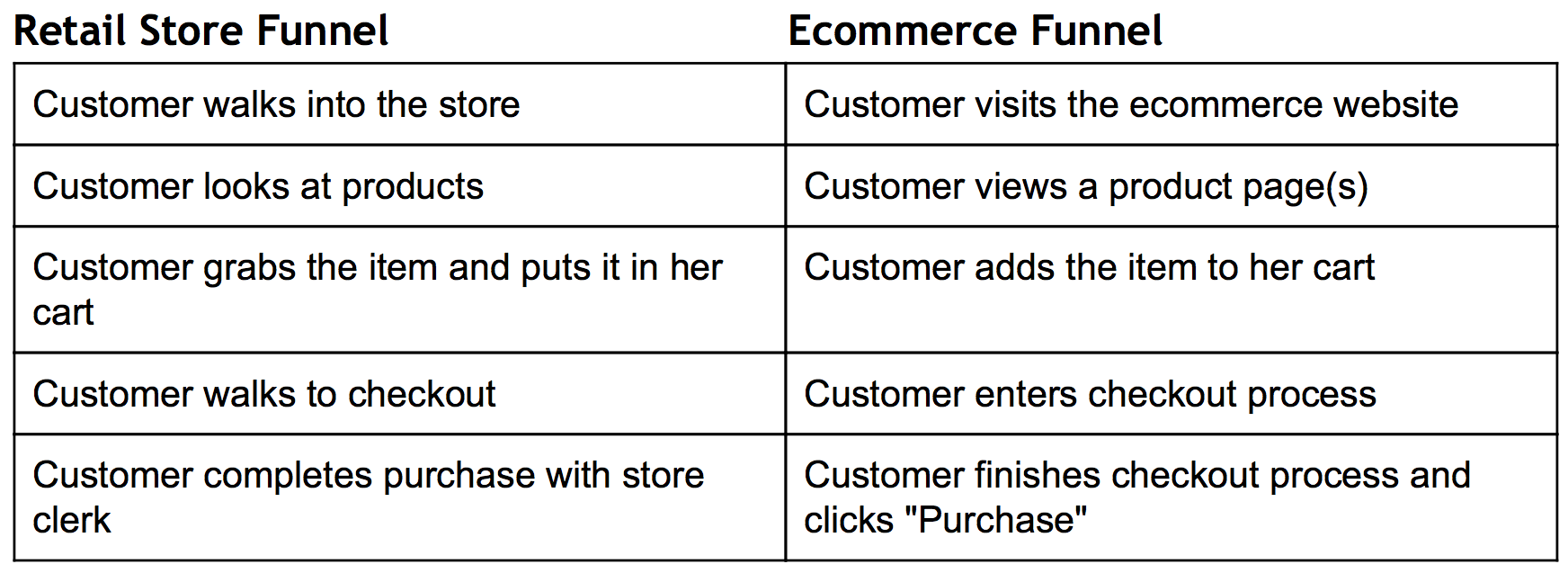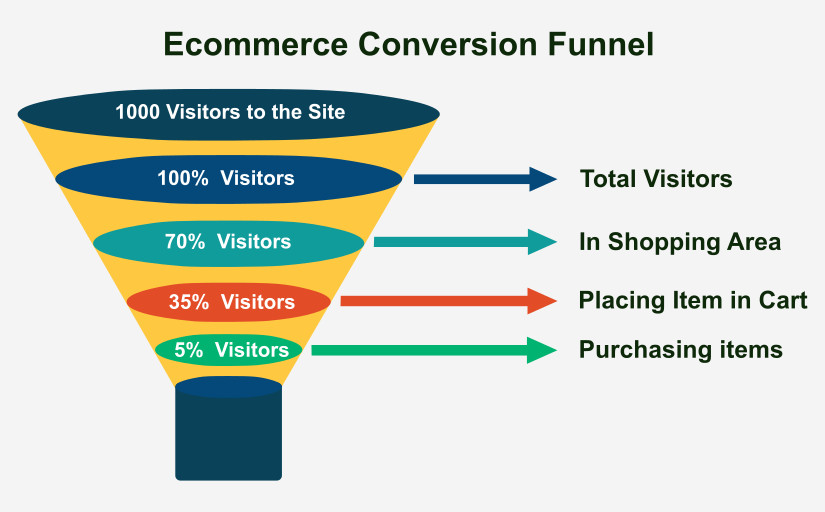How Marketing Funnels Work (The Easiest Way to Create One)
If you’ve spent any time learning about marketing analytics, you’ve probably come across the term “funnels.” What exactly are marketing funnels and why do they matter?
Marketing funnels are a useful tool to help you visualize the path customers take from first finding out about your brand to converting. Understanding them provides useful insight into why some customers convert — and some don’t.
What Are Marketing Funnels?
A marketing funnel is a visual representation of the steps a visitor takes from first finding out about your brand until they convert. The most common type of marketing funnel is four steps:
- Attention: A prospective customer sees your ad, social media post, or hear about you from a friend.
- Interest: They think you can solve a problem and wants to learn more.
- Desire: The prospect has done their research and wants to convert.
- Action: The prospect takes action — they buy your item, schedule a demo, or take whatever other action you want them to take.
- They visit Amazon.com
- They view a product
- They decide to add a product to the cart
- They complete the purchase
Why is the set of steps to conversion called a “funnel”? Because at the beginning of the process, there are a lot of people who take the first step.
As the people continue along and take the next steps, some of them drop out, and the size of the crowd thins or narrows. (Even further along in the process, your sales team gets involved to help close the deal.)
 |
Losing customers might sound like a bad thing — but it’s not. The truth is, not everyone in your funnel will convert. The top of the funnel is where everyone goes in (visiting your site or viewing a marketing campaign). Only the most interested buyers will move further down your funnel.
So when you hear people say “widen the funnel,” you now know what they are referring to.
They want to cast a larger net by advertising to new audiences, increasing their brand awareness, or adding inbound marketing to drive more people to their site, thus widening their funnel. The more people there are in a funnel, the wider it is.
What Are the Different Types of Funnels?
In this article, we’re focusing on marketing funnels, that is funnels that start with some sort of marketing campaign. That might be a PPC ad, content marketing campaign, white paper download, video ad, social media ad, or even an IRL ad. The point is the first step in the funnel is a marketing campaign of some sort.
Other types of funnels you might hear about include:
- Sales funnels
- Webinar funnels
- Email funnels
- Video marketing funnels
- Lead magnet funnels
- Home page funnels
What Can You Use a Marketing Funnel For?
You aren’t limited to using a marketing funnel strictly for signing up and/or purchasing. You can put funnels all over your website to see how visitors move through a specific website flow.
You may want to track newsletter signup (Viewing newsletter signup form > Submitting form > Confirming email) or a simple page conversion (Viewing a signup page > Submitting signup).
Figure out what your goals are and what you want visitors to do on your site, and you can create a funnel for it.
Once you have the data, you’ll be able to see where roadblocks are and optimize your funnel. Let’s dig a little deeper into that.
Why Are Marketing Funnels Are Beneficial?
Marketing funnels provide access to data, called a marketing funnel report, which lets you can see where you are losing customers. This is sometimes called a “leaky” funnel because it allows customers you want to keep to escape the funnel.
Let’s take your average SaaS business as an example. Here’s how a funnel may look for them:
- Visited site
- Signed up for a trial
- Used product
- Upgraded to paying
Do people have to use the product before paying? They don’t, but it’s a good idea to track it so you can see if it’s a roadblock.
For example, if you are losing a lot of conversions after the trial stage, you might need to update your onboarding process so people understand how to use the tool or even adjust the top of your funnel so you aren’t attracting people outside of your target audience.
A Real-Life Marketing Funnel Example
Let’s look at a funnel process for a retail store and see the corresponding steps in an e-commerce store. We’ll be tracking a purchase funnel.
How Google Analytics Marketing Funnels Work
Google Analytics offers funnels, and I’ve written extensively about it in the past. This is an incredibly simple way to track the path prospects take before they convert. Sign in, then head to Admin > Goals > +New Goal > Choose a Goal to create a Google Analytics goal.
Here are a couple of things you’ll need to know when creating funnels in Google Analytics:
- It’s a pretty basic funnel: If you don’t want to dive deep into the data and optimize, you can go with this.
- You cannot go back and retroactively view data: Once you create your funnel, you’ll only be able to the funnel going forward as the data comes in.
What is a marketing funnel?
A marketing funnel is a visual representation of the steps a visitor takes from first finding out about your brand until they convert.
What are the different types of marketing funnels?
Sales funnels
Webinar funnels
Email funnels
Video marketing funnels
Lead magnet funnels
Home page funnels
Why do marketing funnels matter?
Marketing funnels provide access to data, called a marketing funnel report, which lets you can see where you are losing customers.
What is an example of a marketing funnel?
Visited site > Signed up for a trial > Used product > Upgraded to paying customers
How to use Google Analytics to create a funnel
Sign in, then head to Admin > Goals > +New Goal > Choose a Goal to create a Google Analytics goal.
Conclusion
We’ve covered just about everything you need to know about marketing funnels. Here’s a quick recap:
- When someone on your website does something you want them to do (i.e., sign up, make a purchase, fill out a form, etc.), it is known as a conversion.














